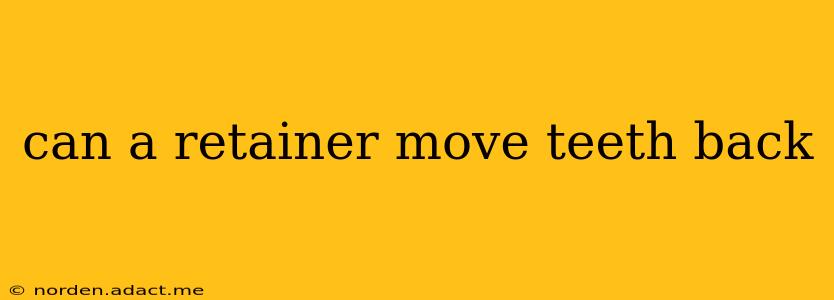Many people wonder if retainers can move teeth back after orthodontic treatment. The short answer is: yes, but only to a limited extent and under specific circumstances. Retainers are primarily designed to maintain the position of teeth after braces or Invisalign, preventing them from shifting back to their original positions. However, they can also make minor adjustments, especially in the early stages after treatment.
This article will delve into the specifics of retainer capabilities, addressing common questions and concerns.
How Do Retainers Work?
Retainers exert gentle, consistent pressure on teeth. This pressure, while not as strong as that from braces, is enough to subtly reposition teeth over time. The type of retainer plays a significant role in its ability to move teeth.
Can a Hawley Retainer Move Teeth Back?
Hawley retainers, known for their wire and acrylic plate design, are often capable of making minor adjustments. The wire can be adjusted by an orthodontist to apply pressure and encourage slight tooth movement. However, they are not designed for major repositioning and are most effective for maintaining the current position of teeth.
Can a Clear Retainer Move Teeth Back?
Clear retainers, often made of thermoplastic materials like Essix retainers, are generally less effective at moving teeth back than Hawley retainers. Their design primarily focuses on retention, and while they might resist minor shifting, they lack the adjustability of Hawley retainers to actively reposition teeth.
Can a Fixed Retainer Move Teeth Back?
Fixed retainers, bonded to the back of the teeth, are incredibly effective at preventing teeth from moving but cannot be adjusted to move teeth back. They provide excellent retention, but they are not designed for any tooth repositioning.
What if My Teeth Are Shifting After Treatment?
If you notice your teeth shifting significantly after orthodontic treatment, it's crucial to contact your orthodontist immediately. Significant shifting indicates a problem that needs professional attention. They can assess the situation and determine the best course of action, which might involve adjustments to your current retainer, a new retainer, or even further orthodontic treatment.
Can I Use My Retainer to Correct Minor Shifts Myself?
No, you should never attempt to adjust your retainer yourself. Improper adjustments can damage your teeth, gums, and the retainer itself, potentially leading to more serious issues. Only your orthodontist possesses the expertise and tools to make safe and effective adjustments.
How Long Does It Take for a Retainer to Move Teeth?
The timeframe for retainer-induced tooth movement varies greatly depending on the individual, the extent of the movement, and the type of retainer. Minor adjustments might take a few weeks, while more substantial changes could take several months.
What Causes Teeth to Shift Back After Braces?
Several factors contribute to teeth shifting after orthodontic treatment. These include:
- Insufficient retainer wear: Not wearing the retainer as prescribed by your orthodontist is a major factor.
- Bone remodeling: The bone supporting the teeth takes time to fully remodel and stabilize after orthodontic treatment.
- Growth changes: In some cases, growth spurts, especially in younger patients, can affect tooth positioning.
In conclusion, while retainers can make minor adjustments to tooth position, particularly Hawley retainers, they are not designed for significant repositioning. If you are experiencing significant tooth movement, consult your orthodontist. Proper retainer usage and regular check-ups are vital for maintaining the results of orthodontic treatment.
